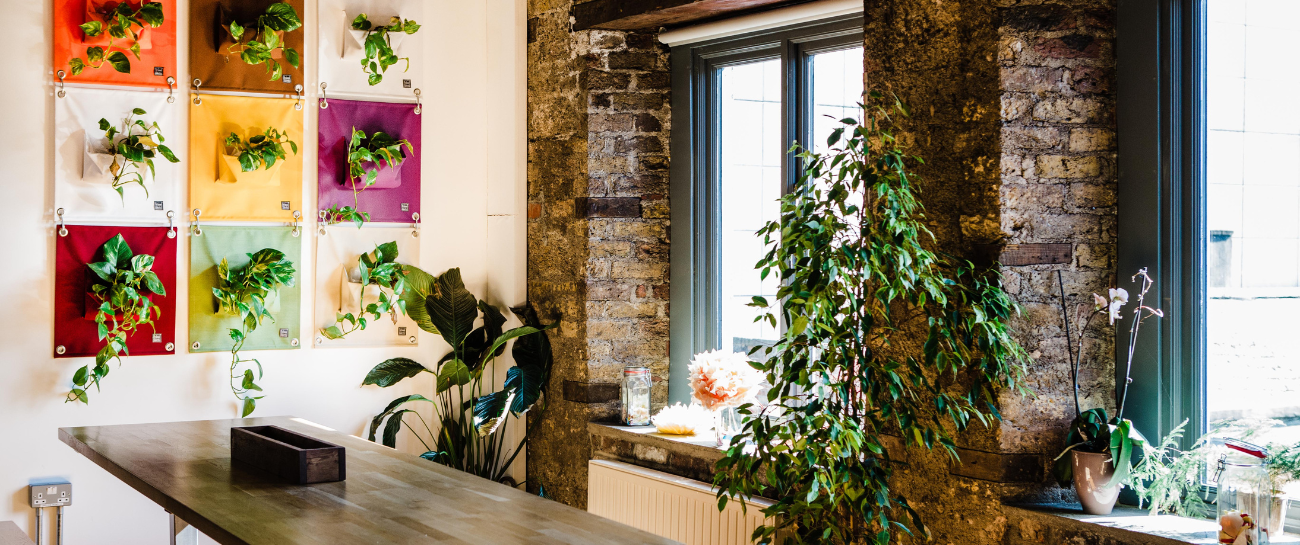Indoor Plants for a Happy, Healthy, Home
Having indoor plants in your home will add many benefits to your indoor space. Plants will be a revelation to the design and feel of that fabulous new table or sofa. Undoubtedly plants brighten, beautify the inside of the home.
Besides looking nice, indoor plants also purify air, release oxygen and can improve your overall health and reduce stress. Don’t take my word for it, NASA has documented their research on indoor plants and their ability to clean the air from certain dangerous toxins. https://ntrs.nasa.gov/archive/nasa/casi.ntrs.nasa.gov/19930073077.pdf
So how do plants do it? Well the magic is in the leaves, as plants grow they take in air through the stoma, located on the back of their leaves. The air is filtered, the carbon in Co2 is used to build cells and other harmful substances like formalhide are warehoused in the roots and soil. This process is photosynthesis, and a by-product is oxygen which is released into your home. Mmm.. Sweet fresh air! Especially this time of the year when our windows are seldom open and colds and flues are widespread.
Indoor plants get the air levels right
In your home with the family together, continued respiration will increase the CO2 levels to above 1000ppm. This contrasts with the great outdoor where levels are usually only 400ppm. Indoor plants in your home take this opportunity to use the extra Co2 and convert it to O2 and releasing it whilst growing and becoming even more attractive. They are little gems.
Let’s get started on three (easy care) plants for a healthy home
- Epipremnum – aka - pothos or devil’s Ivy
Not only is the devil’s ivy one of the best plants for increasing O2 levels, it is also a plant that is super easy to grow. It will grow in semi shade and can tolerate irregular watering. Wherever it’s placed, be it on a counter top or tucked away in a shelving unit, this little plant wants to let you know it’s there. Effortlessly it stretches out its strong stems and fetching foliage and says “let’s get to know each other” Well done you little devil Epipremnum arureum.
- Sanseveria – aka – Mother-in-law’s Tongue or Snake Skin Plants
The Sanseveria plant is an example of a plant that would be perfectly suited to the bedroom, as it converts carbon dioxide to oxygen and releases it at night time. The stoma (the plant’s lungs) open at night instead of day time, this adaptation is most likely to conserve water during the hot African days.
The increase oxygen in your blood stream will definitely get you out of bed easier and increase your productivity (useful for those who work from home). It is extremely water tolerant, loves the dry heat of our centrally heated homes. It also loves heavy fluorescent light so don’t worry if it’s not near a window. Its leaf is leathery and cool to the touch, possibly these characteristics have influenced its alter ego as it’s affectionately known as the mother-in-law's tongue!
- Ficus lyrata – Fiddle Leaf Fig
This plant has impact! Ficus lyrate has huge and unique fiddle-shaped shiny leaves that feel almost like paper. It is commonly known as the Fiddle Leaf Fig. It likes bright but indirect light. Here in Ireland we don’t always get direct sunlight. Therefore, we’re safe to put it in a south facing window or patio door. However, during the occasional scorching balmy day during the summer! Move the plant back from the patio door or its leaves will get burned from the sun. The fiddle leaf fig has a big leaf surface to hold a greater amount of stoma than other similar sized plants, releasing more oxygen. A double benefit from this plant with impact.
Plants have an all-round health boosting effect, with beautiful aesthetic features that really are indispensable addition to any home. Recently we are changing our understanding of indoor plants, in the past we understood why having plants as part of the furniture would be beneficial to a home environment, aesthetically. Now we also know some of their amazing health benefits, as cities grow and become congested they will also reduce the need for ventilation and may contribute to reducing our energy costs as a result.
Pat Keville www.planststore.ie March 2018





